Posts Tagged: species
How a Newly Described Bacteria Species Became a Kimsey
Ever had a bacteria species named for you? No? Well, a newly described bacteria species now carries the last name of a husband-wife team: Lynn and Robert "Bob" Kimsey of the UC Davis Department of Entomology and Nematology. Bob, a...
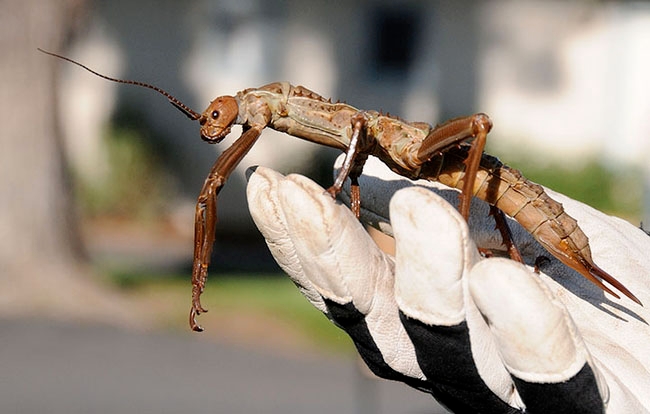
Former UC Davis doctoral student Matan Shelomi described a new bacteria species from the gut of a Giant New Guinea Stick Insect, Eurycantha calcarata. This is a E. calcarata from the Bohart Museum. Shelomi named the bacteria after UC Davis faculty members Lynn and Bob Kimsey. (Photo by Kathy Keatley Garvey)
Monarch Butterflies: Closer to Extinction
It was a good news/bad news/sad news kind of day on July 21 when the International Union for Conservation of Nature (IUCN) announced that the migratory monarch butterfly (Danaus plexippus) is now on its "Red List of Threatened...
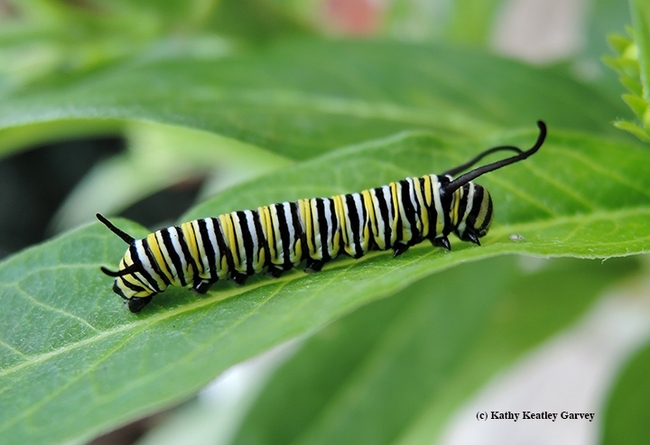
A monarch caterpillar munching away on its host plant, milkweed, in a Vacaville, Calif., garden. (Photo by Kathy Keatley Garvey)
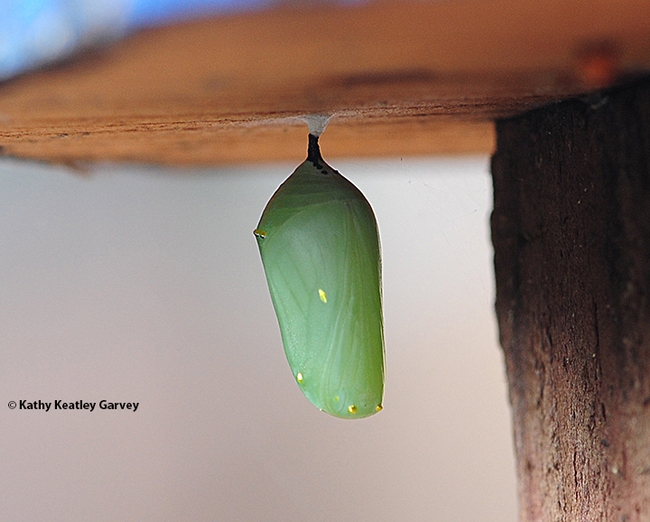
A monarch chrysalis attached to the underside of a bird feeder. (Photo by Kathy Keatley Garvey)
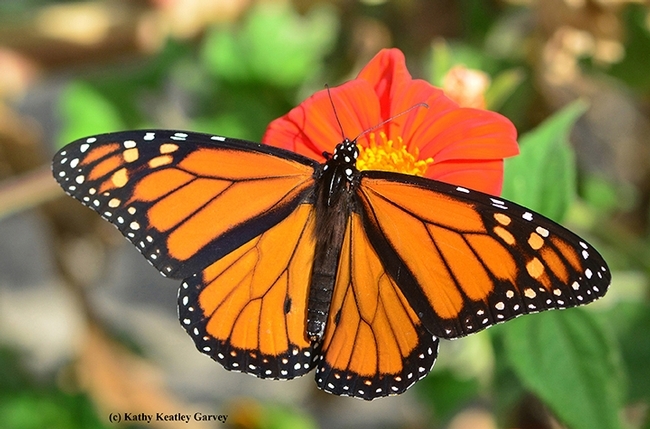
A male monarch butterfly spreads its wings. (Photo by Kathy Keatley Garvey)
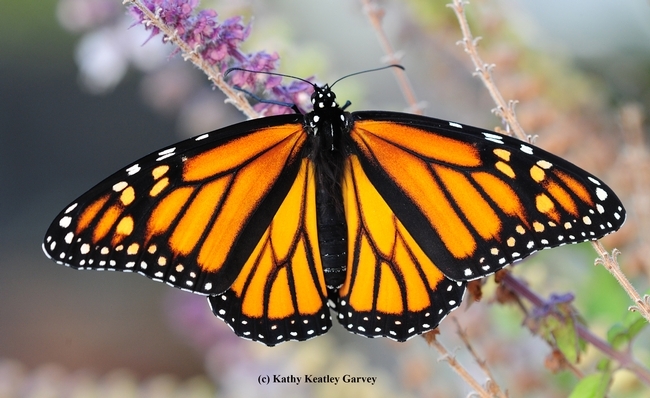
A female monarch butterfly spreads its wings. (Photo by Kathy Keatley Garvey)
How Franklin's Bumble Bee May Be Found
Is Franklin's bumble bee extinct or is it just elusive? Annual search parties conducted since 2006 have failed to locate the species. Now scientists may learn its status via DNA "fingerprints." A recent article in the National...
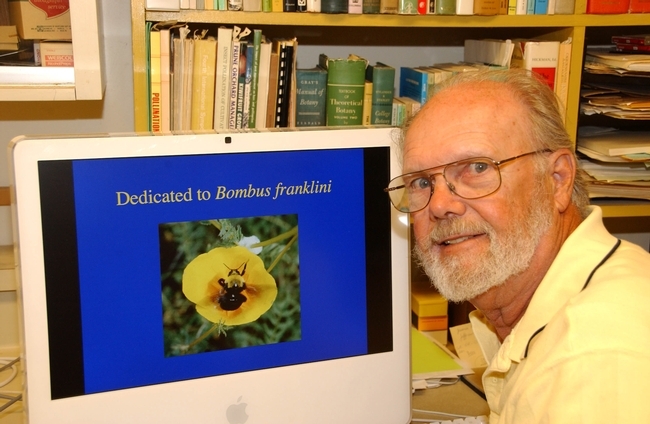
The late Robbin Thorp (1933-2019) annually searched for Franklin's bumble bee but hadn't seen it since 2006. That's his image of the bee on his computer screen. (Photo by Kathy Keatley Garvey)
Robbin Thorp Would Have Been Proud
The late Robbin Thorp, UC Davis distinguished emeritus professor and a tireless advocate of pollinator species protection and conservation, would have been proud. Franklin's bumble bee, Bombus franklini,--a bee that he monitored for...
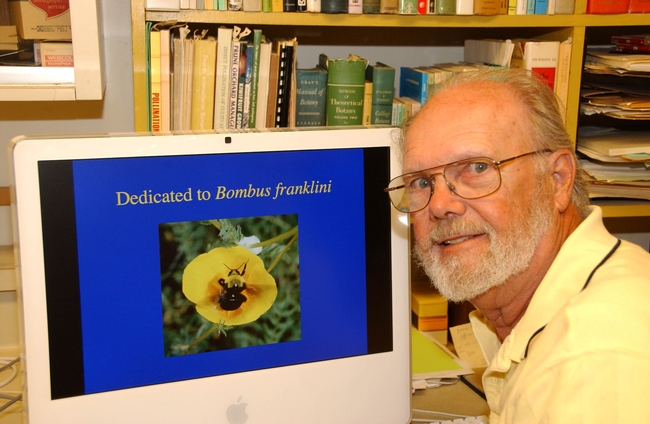
The late Robbin Thorp, UC Davis distinguished emeritus professor, kept his image of Franklin's bumble bee as his screensaver image on his computer. He last saw the bee in 2006 at Mt. Ashland, and was the last known person to see the pollinator. (Photo by Kathy Keatley Garvey)
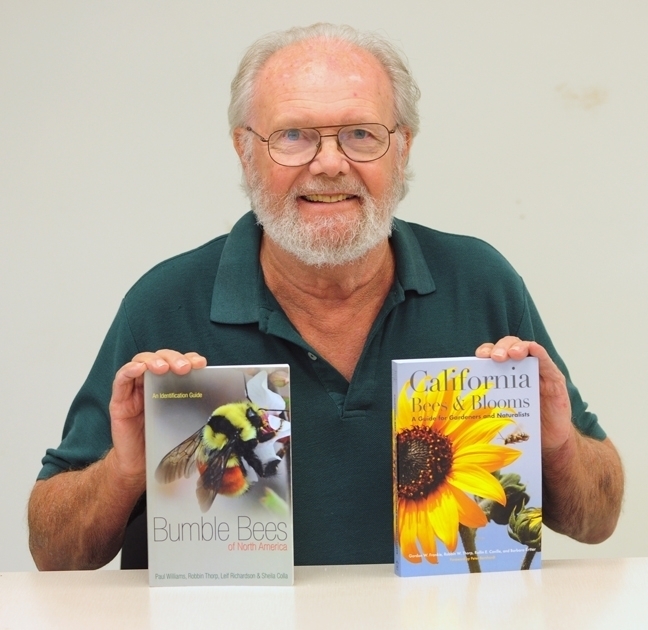
Robbin Thorp, an expert on pollinators, including bumble bees, co-authored these two books in 2014. (Photo by Kathy Keatley Garvey)
UC Davis Professor Jason Bond: Why Taxonomists Are Sorely Needed
It's a thought-provoking podcast that you won't want to miss. Shouldn't we be paying more attention to the undiscovered life on this planet while we're exploring other planets for signs of life? Shouldn't taxonomy be more valued,...
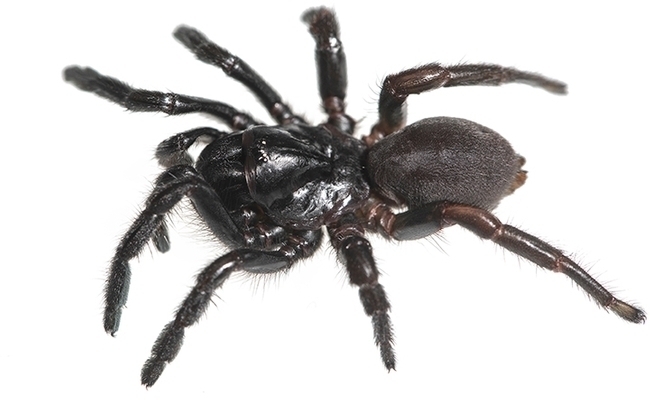
This is a female Cryptocteniza kawtak, discovered by UC Davis professor Jason Bond at Moss Landing State Park, Monterey County. He has described more than 100 new taxa--families, genera, species of spiders and millipedes. (Photo by Jason Bond)

Screen shot of the New Species podcast hosted by L. Brian Patrick. The podcast on "Taxonomic Impediment," featuring UC Davis professor Jason Bond, is Episode 21.

